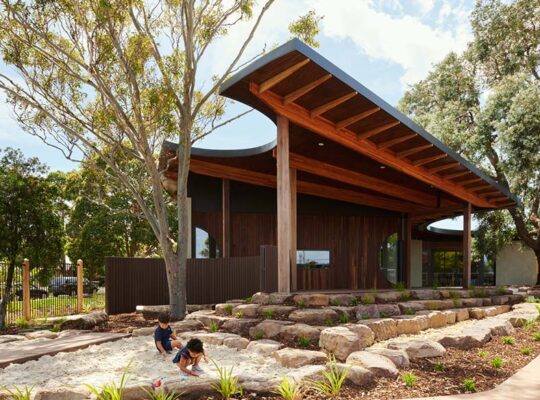Project Overview
The Gutmann Pellets Silo project, a collaboration between obermoser + partner architekten and architect Hanno Schlögl, aimed to repurpose a former grain silo built in 1978 into a wood pellet storage center. Situated within an industrial complex, the silo stood as a tall silhouette amidst rusty tanks and shed roofs, embodying the area’s abandoned character.

Design Approach
In response to the client’s requirements, the project aimed to extend the silo’s functions while transforming it into a local landmark and a company emblem. Additional features included an art lounge, a small power plant, and space for pellets manipulation and delivery. The design focused on integrating these functions seamlessly with the existing structure.

Architectural Design
After exploring various conceptual alternatives, the design team decided to add a “crown” on top of the silo, symbolizing its transformation. This crown, constructed with precast-concrete elements, housed an art lounge and company offices within a glass box. The design emphasized spatial depth and natural light, offering panoramic views from 45 meters above ground.

Preservation of Archaic Strength
To preserve the silo’s archaic strength, fire staircases and elevators were located inside the former grain container, eliminating the need for external additions. This approach allowed visitors to explore the silo’s interior and appreciate its massive proportions.
Transformation Process
The project was completed within one year, involving the erection of a new rooftop steel structure, installation of a glass façade, and addition of the prefab-concrete crown. The client’s engagement and enthusiasm were crucial to the project’s success, transforming the industrial complex into an architectural landmark and a company emblem.

Conclusion
The Gutmann Pellets Silo project exemplifies the transformative potential of industrial architecture. By repurposing existing structures and integrating innovative design elements, the project revitalized the site, creating a local landmark and a symbol of architectural innovation.
























